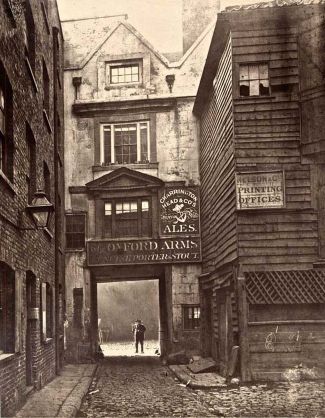Gothic Victorian D&D

I’ve a confession. I never really cared for Ravenloft, either the classic AD&D module or the setting. To be fair, it probably had more to do with the GMs than the material itself. I understood that Ravenloft adventures were supposed to be scary and suspenseful, but, in my experience, they never were. Ravenloft had its charms, and I like the idea, to be sure, but it never quite clicked for me. Well, never quite clicked for me with one exception: TSR’s wonderful Masque of the Red Death campaign expansion. I only ever played in that setting once or twice, but I enjoyed it. It combined the better elements of AD&D and Call of Cthulhu to craft an intriguing setting.
Before moving on with the further thoughts about Victorian-era Gothic D&D, let’s sum up the conclusion from my last post about using The GUMSHOE System’s concept of investigative skills with 5E D&D.
The GUMSHOE System divides skills into two large group: investigative skills and general. No die roll is ever required to gain information with an investigative skill. If the right skill is applied to the right situation, information is uncovered, and the mystery proceeds apace.
For 5E D&D, the obvious investigative skills are Arcana, Deception, History, Insight, Intimidation, Investigation, Nature, Perception, Persuasion, and Religion. That’s ten skills. In an adventuring group, each of the skills should be found among the proficiencies of the characters at least once. This ensures that no clue will go undiscovered because no character has the right skill for the job.
The GUMSHOE System has built into it a limit to how to often investigative skills reveal useful information. In 5E D&D, this same limit can be implemented as X number of uses. I still like the idea of making X equal to the character’s proficiency bonus. Thus, a 1st-level character gets three automatic investigative skill successes. This pool of automatic successes recovers one use after a short rest or all uses after a long rest.
Now for some specifics. In D&D 5E, characters start with at least two skills based on class and probably two other skills from background. If we count tool proficiencies as skills, most characters have at least one more skill. Some have more. For example, a dwarf rogue with the charlatan background starts with a dwarven tool proficiency, stonecunning (a sort of specialized History skill), four class skills, thieves’ tools proficiencies, two background skills, and two background tool proficiencies. If we count most of those as skills, that’s 10 of them (ignoring stonecunning). Change the class to fighter and the character still has seven skills (losing thieves’ tools and two class skills).
Let’s say that we treat the character’s total number of racial, class, and background skills and tool proficiencies as points that can be used to purchase skills and tool proficiencies. Thus, the dwarf rogue (charlatan) gets 10 points. If the character were a right, he’d get seven points. The players and GM make this determination for each of the characters. When selecting skills and tool proficiencies, the top priority is the investigative skills. As mentioned above, each investigative skill must found among the proficiencies of at least one character. Duplicates are fine, of course. Once the ten investigative skills have been accounted for, the players get to spend their remaining skill points on whatever skills and tool proficiencies make sense for their respective characters’ classes and background.
Back to Masque of the Red Death. In that setting, dedicated spellcasters such as clerics and wizards aren’t really a thing. Spellcasting ability is sharply curtailed, and the variety of spells is limited as well. Non-human player character races are also rare if allowed at all. For now, I’m ignoring those aspects, and I’ll likely continue to ignore the limited race selection, mainly because I’m fascinated by the idea that the British Isles are ruled by high elves while France is ruled by drow under the iron fist of their Moon Queen.
What probably merits adapting to 5E D&D are the character kits. For those unfamiliar with 2E AD&D, a character kit is sort of like a 5E D&D background, and turning the Masque kits into backgrounds ought not be too difficult. The kits that would need backgrounding are Cavalryman, Charlatan, Dandy, Detective, Explorer/Scout, Journalist, Laborer, Medium, Metaphysician, Parson, Physician, Qabalist, Sailor, Scholar, Shaman, and Spiritualist. Some of these already appear 5E D&D (such as Charlatan and Sailor), but they might need tweaking to fit the late 19th century Victorian millieu of the Masque.
Of course, no foray into Victorian-era Gothic horror can ignore Chaosium’s excellent Cthulhu by Gaslight. From this fine book, I’m reminded of the importance social class had in the era. Characters are Upper Class, Middle Class, or Lower Class. Occupation is the main factor for determining social class, which in 5E D&D terms means sorting backgrounds by social class. For example, a Laborer is very unlikely to be Upper Class (or even Middle Class). Gaslight offers new occupations specific to its setting: Adventuress, Aristocrat, Clergyman, Consulting Detective, Ex-Military, Explorer, Inquiry Agent, Official Police, Rogue (not to be confused with the character class), and Street Arab (period slang for Lower Class children “adept at surviving on the street”) (Gaslight, page 12). Some of those occupations repeat character kits (i.e., Parson and Clergyman). Even after eliminating repeats, that leaves an impressive list of setting/genre-appropriate backgrounds.
Nota Bene: All of the links above are affiliate links. If you click and buy, I get a pittance.

Leave a Reply